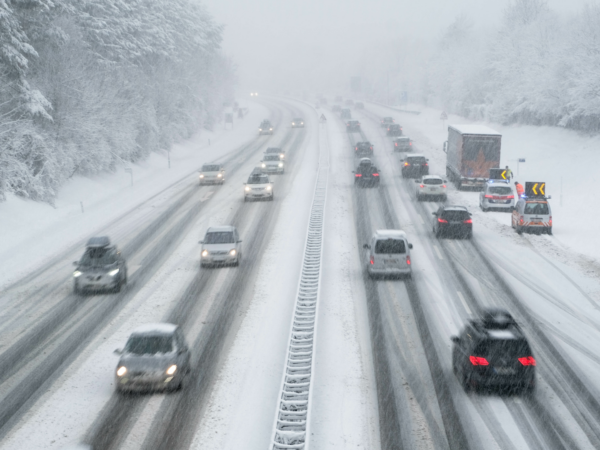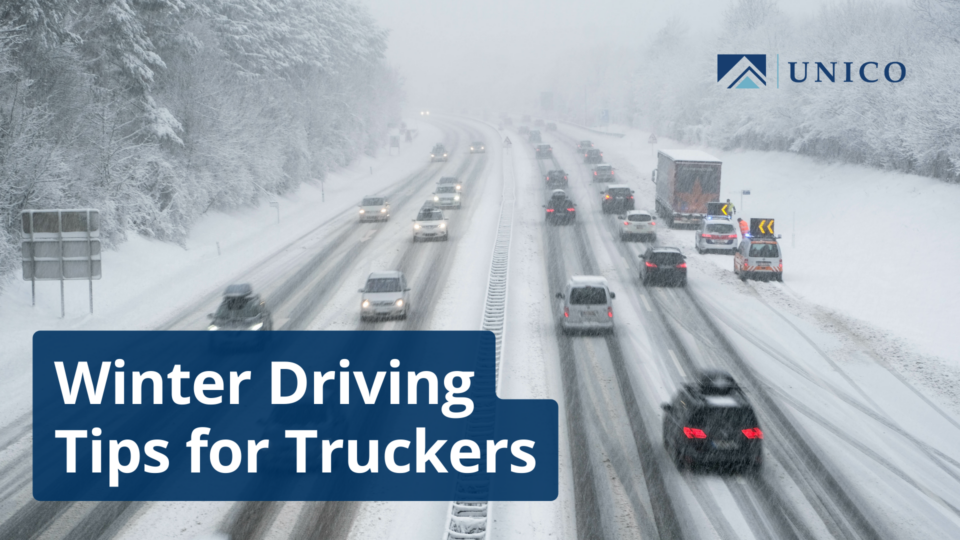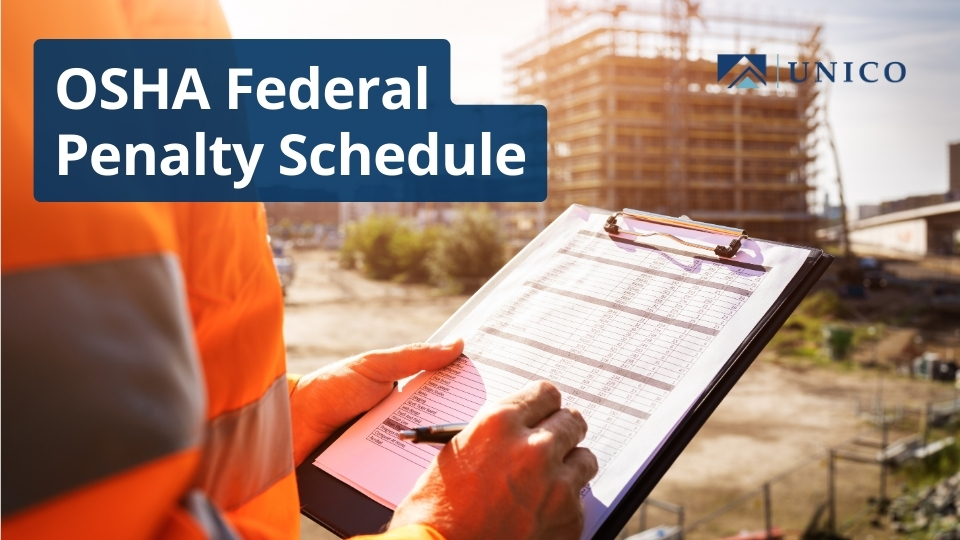One of the joys of the trucking business is the ability to travel across the country and experience the beauty of different roads from coast to coast. However, this also means you must prepare for various types of driving conditions. The winter months make for treacherous road conditions across much of the country; the best thing you can do to make sure you stay safe when the temperature drops is to be ready.
Whether you are driving through a busy metropolis or sparsely populated country roads, there are heightened risks to be aware of in winter. You never know what may happen—be prepared for anything. Here are some good practices to keep you and your cargo safe in the winter months.

Practice Proper Vehicle Maintenance
In cold conditions, it is especially important to inspect your vehicle before you get on the road.
- Cold weather can reduce power and even cause batteries to freeze. A fully charged battery freezes at much lower temperatures than a battery at a lower charge.
- For fifth wheel lubrication, make sure you are using a winter-grade product. Summer-grade lubricant could cause steering issues in low temperatures. Check the type of coolant in your radiator, replace if needed, and ensure there are no leaks.
- Routinely check your heater, defroster and wiper blades are all in proper working order, especially if you have gone an extended period of time without use.
- Most importantly, check your tire tread depth and for proper inflation. Ice, sleet and snow decrease traction, so decent tread depth is critical.
Be Prepared with Equipment and Supplies
Just as important as vehicle maintenance is having the right gear to get you through the most severe winter conditions. Some states require trucks to carry chains or cables during certain months, and they may mandate which axle(s) require chaining and the use of specific traction devices. Before setting out, make sure you know the laws in the states where you are traveling. If you travel frequently through mountain passes, where chaining is often a rigidly enforced requirement, you may want to consider carrying a list of state specific safety requirements for quick reference. Also, be informed on how to put your chains or cables on before you need them, as subzero temperatures and ice-covered roads with heavy snowfall are not the best conditions to learn in!
When it comes to fuel, gelling is the main concern. Know ’s regulations on buying additives for fuel and know if your vehicle has fuel tank heaters. To prevent gelling, keep your tank as full as possible in cold conditions, avoid turning the truck off for long periods, monitor the temperature and wind chill carefully, and beware of fuel purchased in southern states if you are traveling into cold conditions. Weather conditions in the South do not require blended fuel, so fuel purchased there will have a greater tendency to gel if driven into cold conditions.
Always carry a winter driving kit with you – you never know when one of these items could save your life. Recommended items to stock in your kit include the following:
- Flashlight and batteries
- Blankets
- Extra clothing, specifically insulated, water repellant and high visibility outerwear
- Non-perishable food and water
- First aid kit
- Shovel
- Bag of sand or salt
- Windshield scraper and brush
- Extra washer fluid
- Jumper cables
- Tire chains or traction mats
- Cellphone, charging cables and fully charged portable charger
- Lighter, matches and candles
Know the Road Conditions
Having a reliable source for weather reports is the first of two key safety mechanisms you can have in place. Use the weather report when you are planning and check frequently for changing road conditions. The second mechanisms you can install is a thermometer. Check your reliable thermometer to see if the temperature is nearing or below freezing (about 32 degrees F). If you do not have a thermometer, look for sliding vehicles, lack of water spray from tires or any ice buildup to gauge icy road conditions.
Proper Reactions to Common Winter Driving Events
- Frozen Brakes: In cold conditions, the brake lining could freeze to the drum if brakes are set when they are still wet. To fix this, you will have to break the ice by either backing up so they will break free on their own or hitting them with a hammer to loosen them.
- Skidding: If you find yourself skidding, it’s recommended to quickly depress the clutch, look at the left mirror only and steer to get back in line with the trailer. Be careful not to over-steer. If skidding, it is likely there will not enough room to stop without a collision, and you could easily make matters worse by slamming on the brakes. Avoid skidding by not braking, turning, steering or accelerating too quickly.
- Jack-knifing: If you recognize the early sign of a jack-knife (tractor and trailer at more than 15 degree angle), there is a chance to correct. Recover by steering until the trailer and tractor are realigned. Use the accelerator to pull the trailer back in line with the tractor and avoid braking if possible.
Preparation is key to safe winter driving. In less than ideal conditions, increase your following distance, make smooth downshifts and take extra caution when traveling on ramps, bridges and overpasses. Your best bet is to stay as far away from other vehicles as possible. If something does go wrong, increase your chances of surviving the incident by not panicking and utilizing safe driving practices and trainings. If you begin to feel uncomfortable or unsafe driving in the given conditions, do not drive. It’s better to be safe than sorry; that is, better your load is delivered late than not delivered at all.




